The Memorial Arch at Eastern View is one of Australia’s most famous landmarks and honours the soldiers who built the Great Ocean Road after World War I. Sometimes called a triumphal arch, it represents resilience, commitment and unity. The road itself is world-famous for its beauty and history. As the largest war memorial in the world, the Great Ocean Road is a unique combination of natural wonders and history. The arch is the start of this famous road, welcoming you to a journey of rugged cliffs, beaches and rainforests. For visitors, it’s not just a pretty spot; it’s the key to understanding Australia’s history and a tribute to the service men and women.
The Story Behind the Great Ocean Road’s Tribute
The Memorial Arch has a rich history with multiple rebuilds. Originally built to honour the soldiers who returned from active service, it’s an endeavour to honour their sacrifices. The Great Ocean Road itself, often referred to as a memorial statue, was built as an avenue of honour and a way to immortalise those who served.
Over the years the Memorial Arch has celebrated many milestones, 50th, 75th and now the 100th anniversary of the construction beginning. These events highlight the ongoing significance of the arch as a historical and cultural icon.
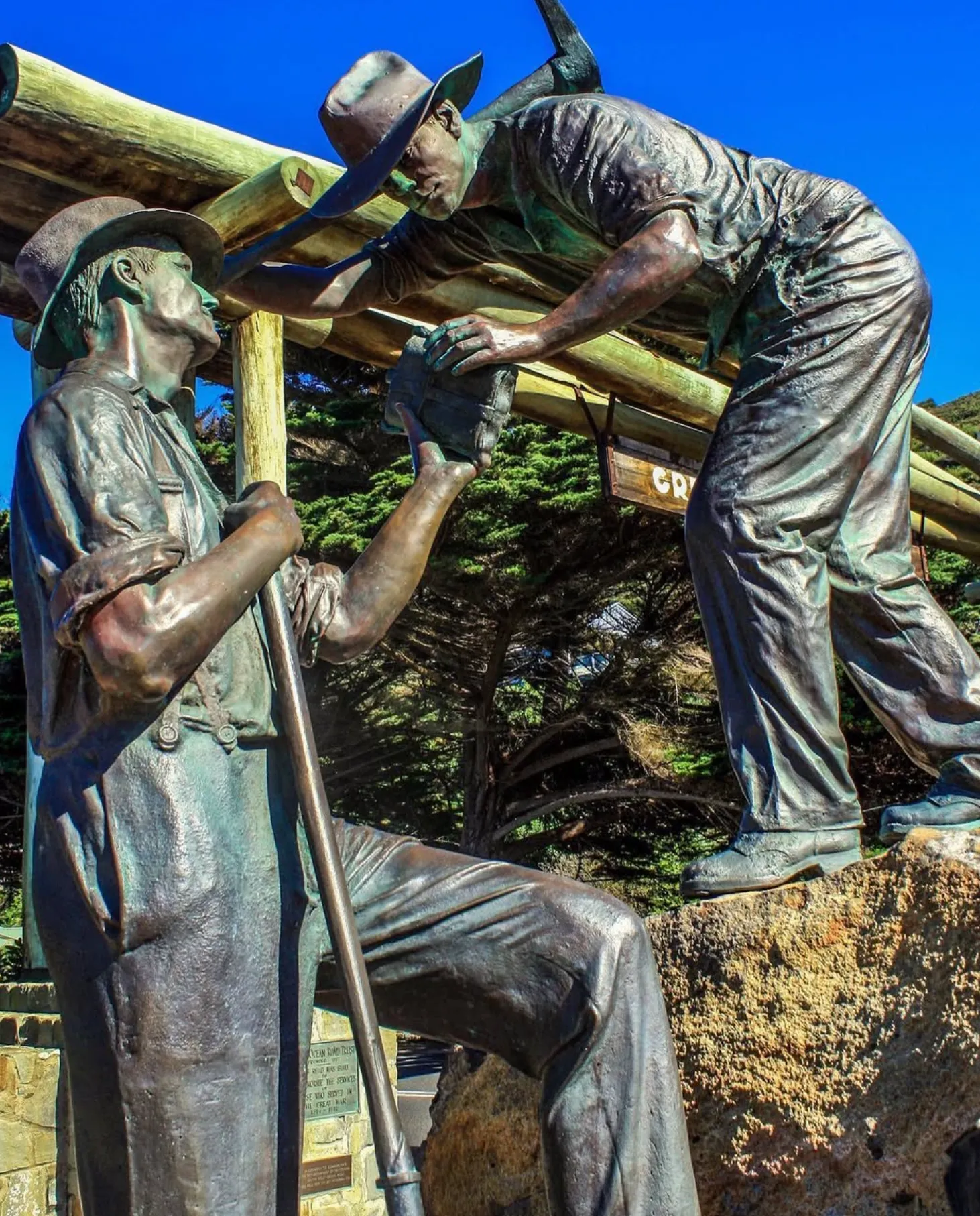
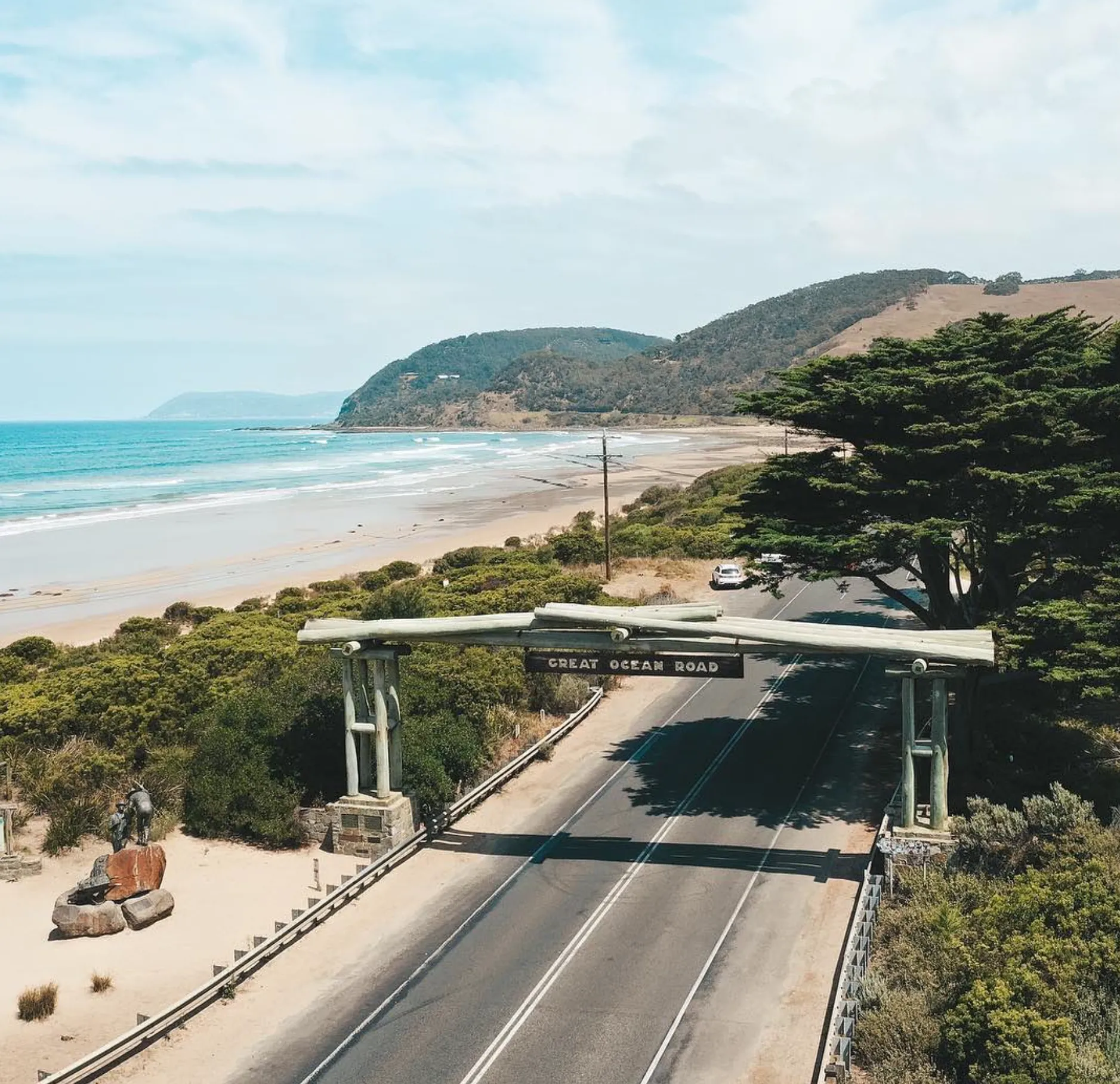
A Historic Tribute
The Timber Log Archway
The original timber log archway was built in 1939 when the foundation stone was laid to mark the opening of the Great Ocean Road. The stone supports and simple design captured the hearts of locals and visitors. The gate form was chosen to represent the guard of honour given by the soldiers who built the road. The arch became a focal point for the community, a symbol of those who had given so much for their country.
Memorial Gates and Plaques
The arch was flanked by memorial gates and commemorative plaques which added to the historical context. These gave information on the building of the road and the people who built it. The plaques told the story of the challenges of building the road and visitors could gain a deeper understanding of this tough road’s history. Today they educate and inspire and keep the road a living memorial.
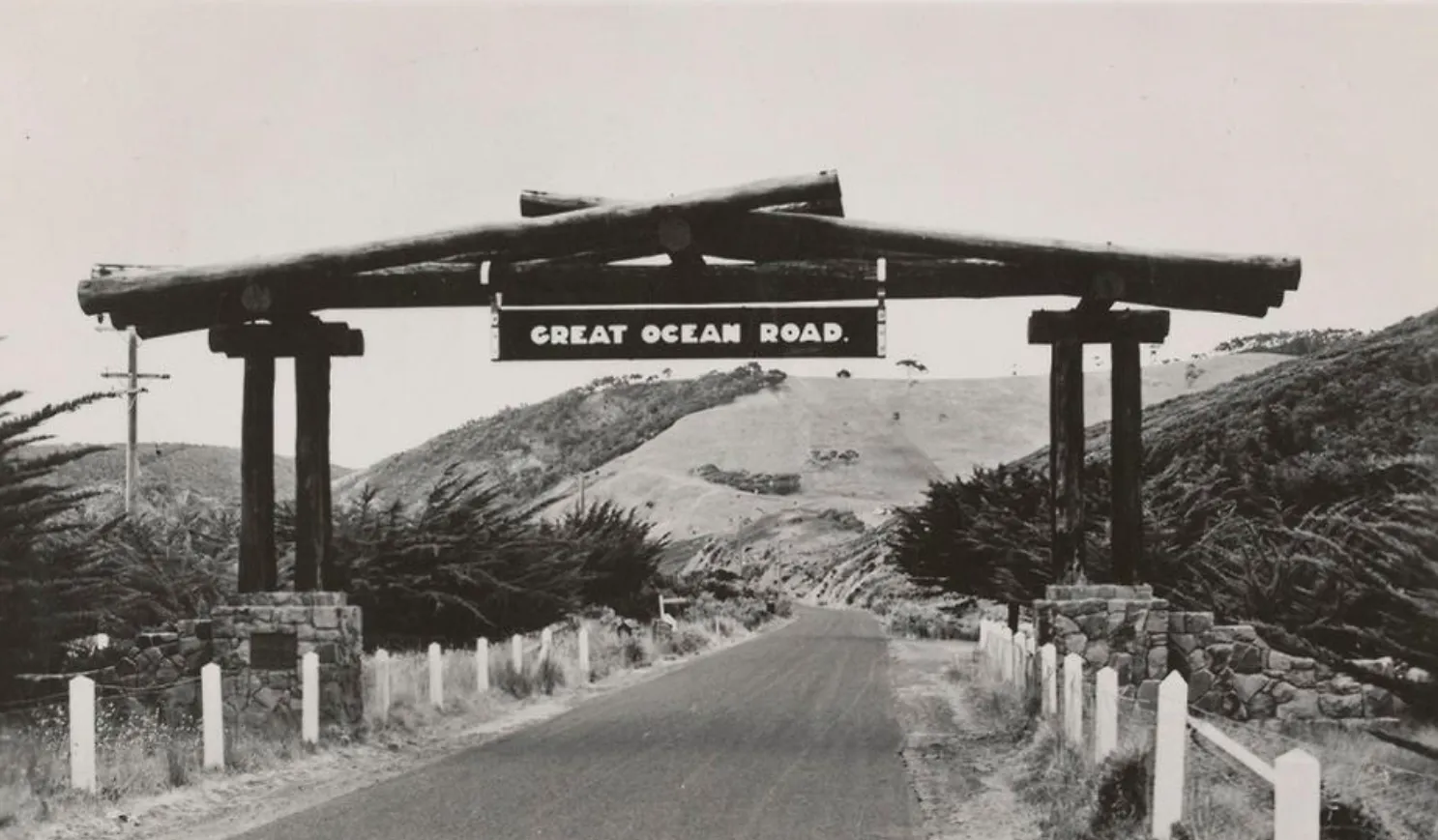
The First Arch – Demolished
The first Memorial Arch stood for several decades but was deemed unsafe due to wear and tear from increasing traffic. This arch was dismantled in the 1970s, and although it’s gone physically, it’s not forgotten. Its removal made way for a more durable structure to withstand the demands of modern travel. Although it didn’t last long, the original arch laid the foundation for what would become an icon of the Great Ocean Road.
The Second Arch – A Collision with History
The second arch was built in 1973 with some design and material improvements. But it had its own problems. In 1983 the Ash Wednesday bushfires swept through the area and damaged the arch and surrounding land. A collision with history. The community rallied quickly to rebuild. A reminder of the power of nature and the importance of preserving heritage.
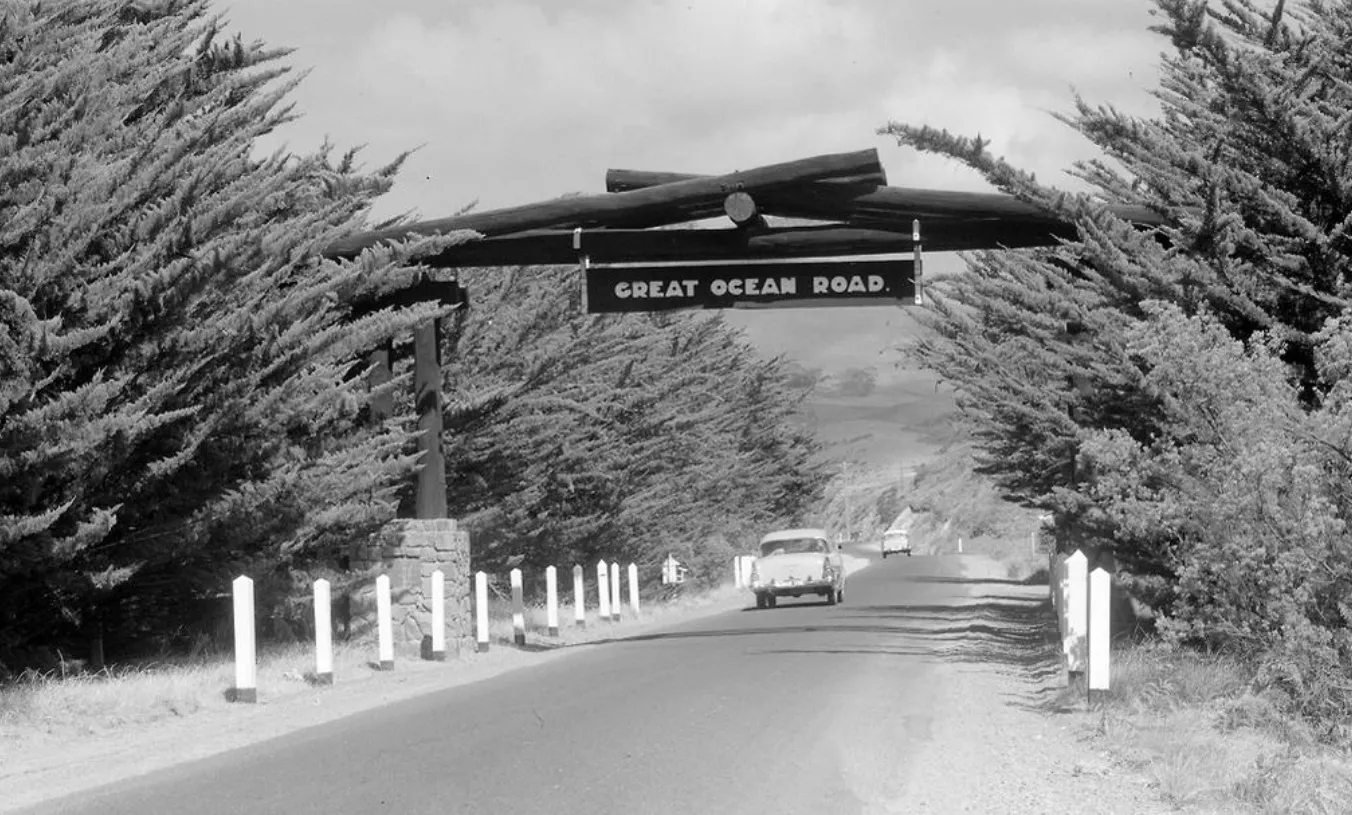
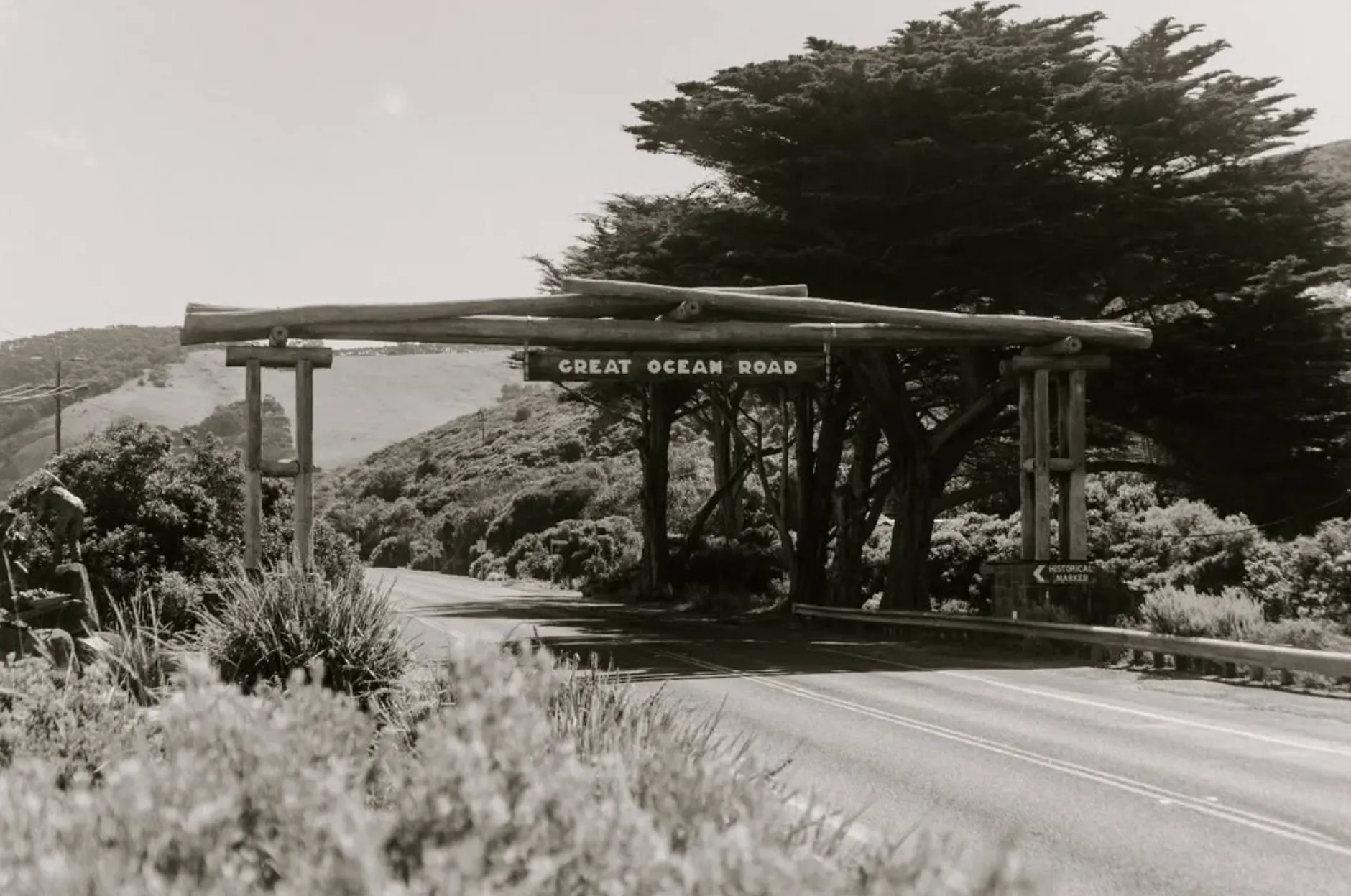
The Third Arch – Burnt to the Ground
After the Ash Wednesday fires a third arch was built. Unfortunately it was damaged by fire a few years later. Each time the arch is rebuilt it’s a reminder of the community’s commitment to keeping this honorary arch as part of the region’s heritage. These events have added to the story of the Memorial Arch, making it not just a physical structure but a story of resilience and rebirth.
The Fourth Arch
The current arch was built in 1995 after years of work and commitment. Built with a cement archway for added strength, this one incorporates design elements from the previous arches. The finished arch has detailed historical plaques and Grecian statues to give visitors a sense of the significance of the Great Ocean Road. This one will last, a tribute to the soldiers who built the road and the community that has kept its history.
Make the Most of Your Time Here
A visit to the Memorial Arch is a walk through history. Take time to read the plaques and have a look around the area, there are beautiful picnic spots and coastal views. For a full experience join a Great Ocean Road tour. These tours often visit Victoria Park and Burwood Park and give you a good overview of the area. Whether you’re in a comfortable air-conditioned vehicle or self driving, the arch is a great place to start your journey.
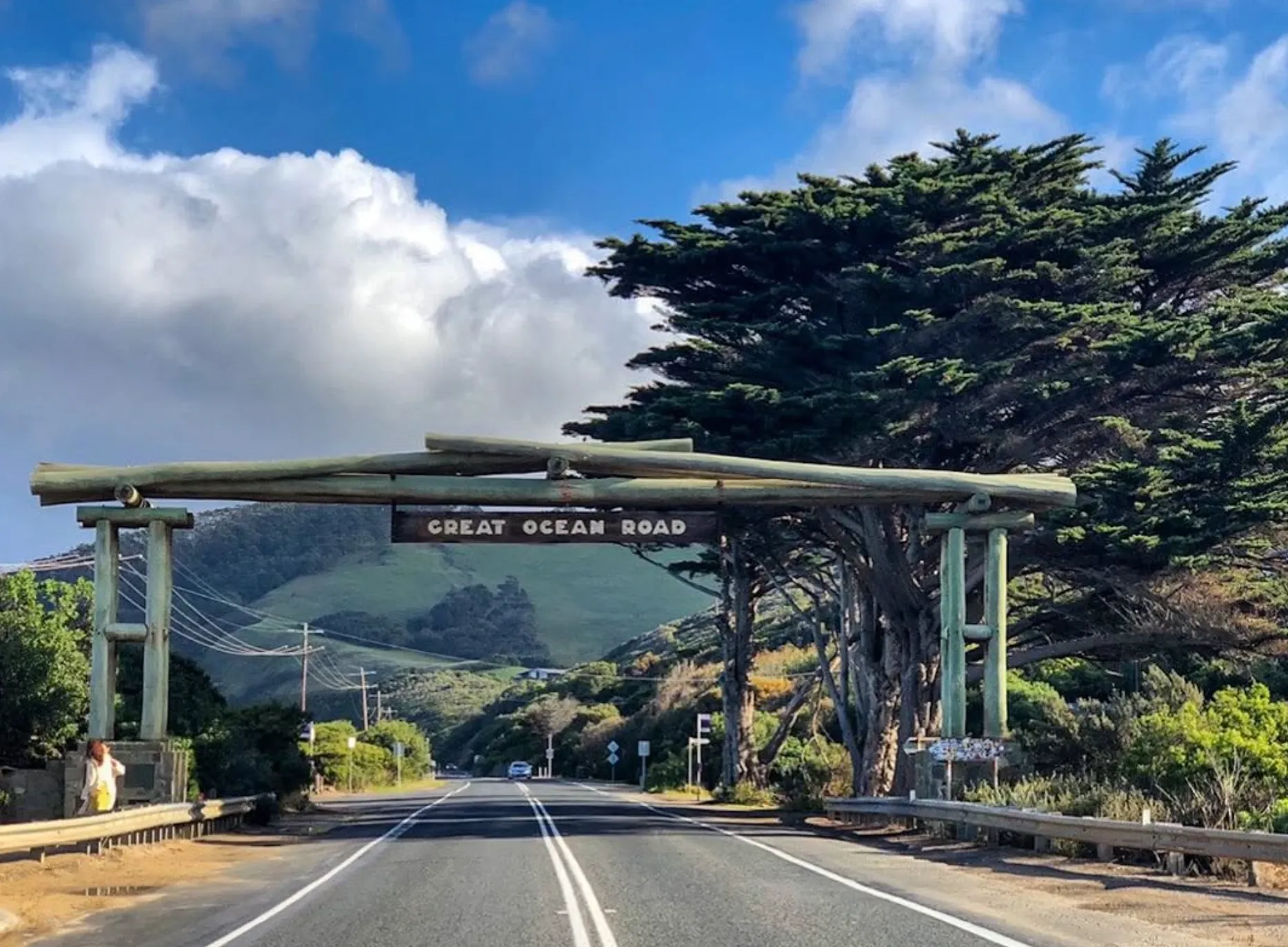
Best Time to Visit
Spring and Summer
September to February is the best time to visit the Memorial Arch. The natural beauty of the Great Ocean Road is at its best, the greenery is lush and the wildflowers are in bloom. The warmer weather is perfect for outdoor activities and the longer days mean you have more time to have a look around. Whether you’re on a Trip or just passing by, this is the best time to visit.
Autumn and Winter
Autumn and winter (March to August) is a different but equally beautiful experience. The cooler weather and dramatic skies are a unique atmosphere, with fewer people, which means a more peaceful visit. The rugged coastline is at its best during these months, perfect for photography and quiet contemplation. If you want a more peaceful experience, autumn and winter is the time.
FAQ
What is the Memorial Arch on the Great Ocean Road?
The Memorial Arch is a historic monument at Eastern View, built to commemorate the soldiers who built the Great Ocean Road after World War I.
How many times has the Memorial Arch been rebuilt?
The Memorial Arch has been rebuilt four times due to structural issues and natural disasters, including fire damage from the Ash Wednesday bushfires.
When should I visit the Memorial Arch?
Spring and summer are for the best landscapes, and autumn and winter are for a more peaceful experience.
Are there tours that visit the Memorial Arch?
Yes, many operators offer full-day trips or bus tours to visit the Memorial Arch.
What other attractions are near the Memorial Arch?
Aireys Inlet, Split Point Lighthouse, coastal views. Great for a one-day trip.












